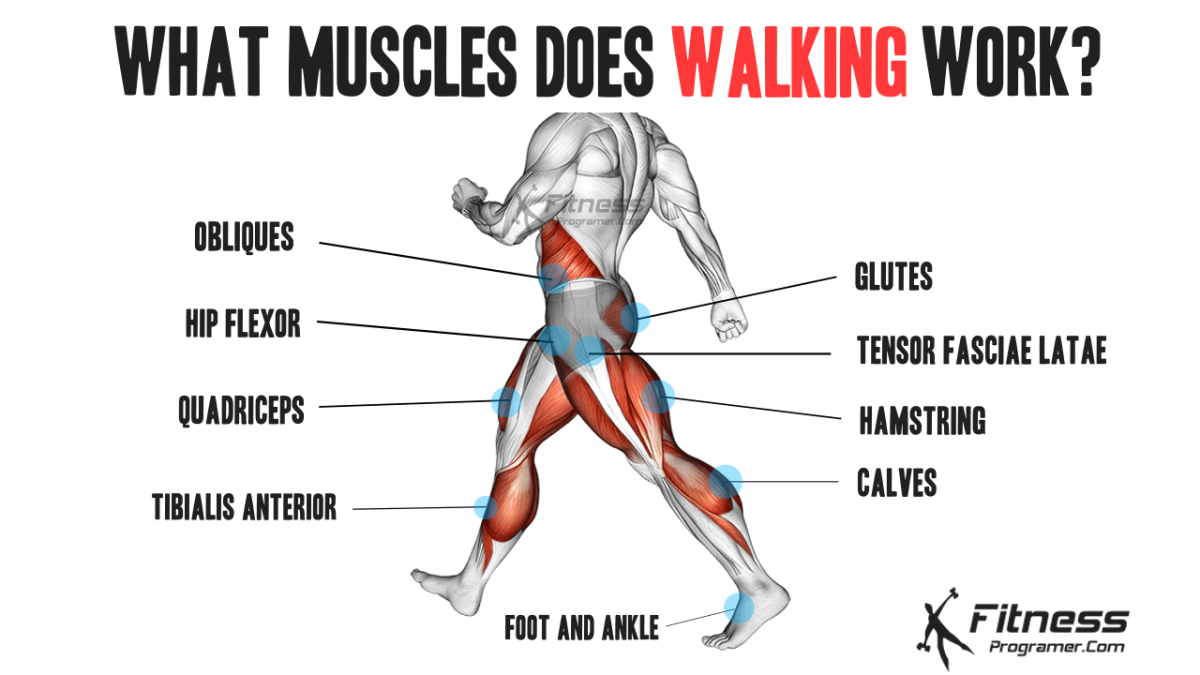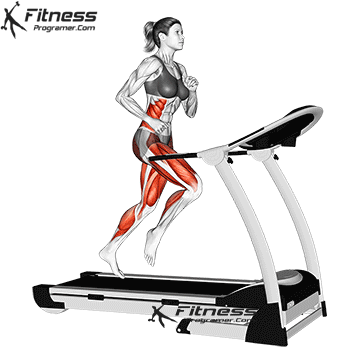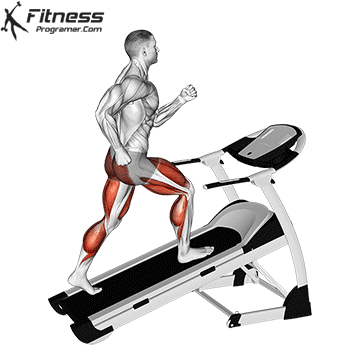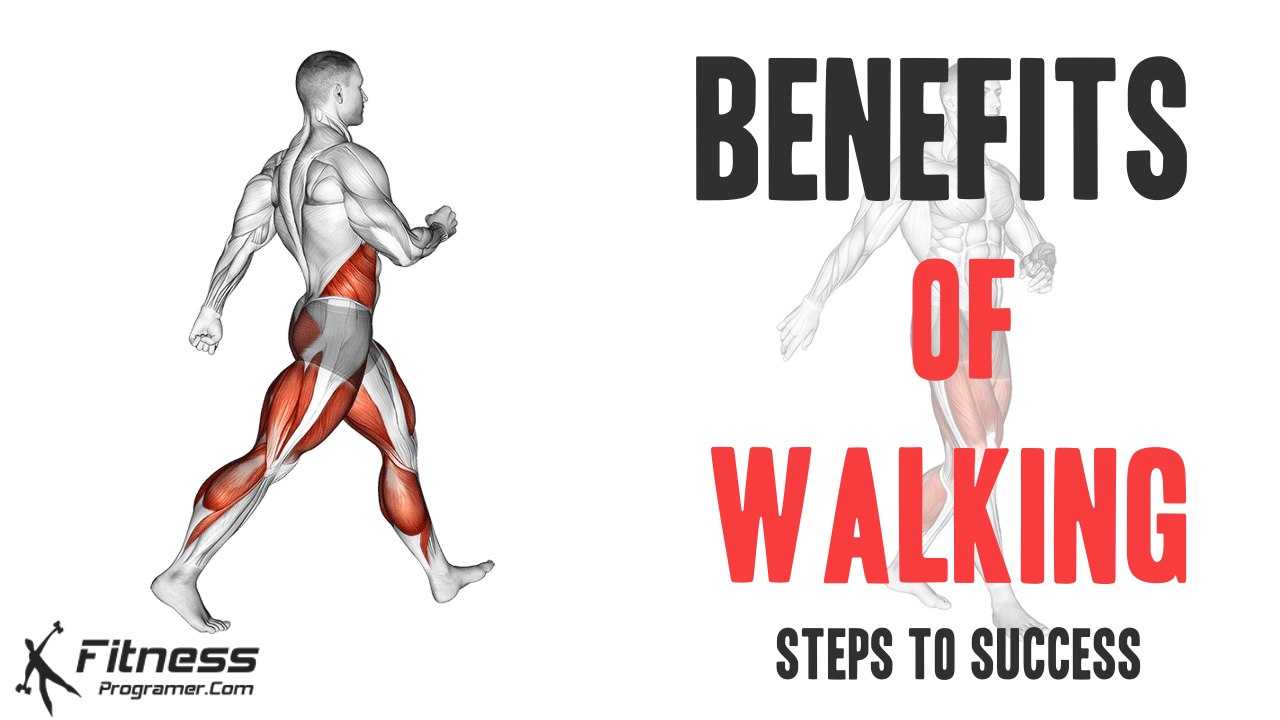Contents
Walking is a great low impact exercise, that has many benefits, including being one of the easier and enjoyable physical activities you can do.
Yes, walking is a workout. To what degree of a workout, is an even better question. Each person is different and their level of activity should not be compared to others. This is not to say that a little competition doesn’t inspire us from time to time.
Comparing a walking workout to another workout activity such as running, is like comparing apples to oranges. Each activity uses a different set of muscles and has its own benefits. To make a decision about walking, you should know some of the benefits we discuss in the rest of this article.
What Muscles Does Walking Work
Walking is a great low impact form of physical activity. Some of the benefits of walking include building your legs, endurance while strengthening your muscles and ligaments. Walking is beneficial for the whole body, but it especially works the leg and hip muscles more. The muscles that work while walking are mainly:
- Quadriceps
- Gluteus Maximus
- Hamstrings
- Tensor fasciae latae
- Sartorius
- Adductor Magnus
- Adductor Longus
- Adductor Brevis
- Pectineus
- psoas
- Obliques
- Calves
- Tibialis anterior
- Extensor digitorum longus
- Extensor hallucis longus
- Peroneus tertius

Benefits of Walking
You should consider walking on a regular basis a part of your lifestyle. Just 30 minutes of walking each day can improve cardiovascular fitness, reduce excess body fat, strengthen bones, and increase muscle strength and endurance. Of course, the benefits of regular walking are not limited to these. Here are health benefits of walking.
- Weight Loss: Losing weight is a challenge for most of us. Each one of has to figure out what works the best for ourselves. Walking can be one part of your healthy lifestyle that will help maintain and in the right intensity help you lose weight.
- Cardiovascular Benefits: Walking gets your heart pumping and your blood flowing to all parts of your body. This improved circulation improves the function of your body. A regular walking routine will not only strengthen your heart muscle, but also will help keep high blood pressure, high cholesterol and diabetes in check. (1)
- Muscle and Joints: Walking is a low impact activity, which doesn’t put the extreme pounding on your joints. Your muscles are exercised during the walking activity and you should incorporate stretching exercises during the warm-up and cool down stages of your walk.
- Slows Mental Decline: Walking increases the blood flow to your brain. Your memory will benefit from increased blood flow and some diseases related to memory function can be warded off by walking 20-30 minutes a day. Also, a study by the Radiological Society of North America (RSNA) states that walking can slow the progression of Alzheimer’s disease and increase your brain’s resistance to the disease. (2)
- Reduces Stress: Exercise has been shown to reduce your stress. Among those benefits include a chance to take your mind of the worries of the day. Walking with a friend can give you something else to think about along with some companionship. (3)
- Improves Sleep: After walking, you can switch to a better sleep pattern. This is because walking naturally increases levels of the hormone melatonin, which helps you sleep. Research into testing the relationship between physical activity and sleep shows that walking can be beneficial for a better night’s sleep. (4)
- Increases Energy: Walking makes you feel energetic. Have you thought that a 10-minute walk could be as effective as 50mg of caffeine? Yes, one study confirms this, while other studies show that after starting a walking workout of 20-30 minutes a day, you experience an increase in energy levels. (5-6) Research has shown that people who had previously been with little or no exercise, after starting a walking workout for 20-30 minutes several times a day experienced and increase in their energy level.
Getting Started With a Walking Program
You want to walk the mile, getting the most of your fitness to burn calories. If you walk a mile, it will help you burn at least a hundred calories and around 50 or more fat calories. Walking briskly you can burn calories faster. When walking to fitness you must base pace, speed and intensity to decide how many calories you can burn.
Building your Walking Time – How Long Do I Walk?
You be the judge, if you are not used to walking then start with a 10 minute or 20-minute walk. Overtime increase your time goals to 30 minutes and if you can carve out the time, a 45-minute walk. Remember the longer you walk nonstop, the more fat you will burn.
1- Outdoor Walking

How to walk!
Here are the items you should consider when you start a walking workout plan:
- Make sure you check with your Doctor to make sure you are healthy enough to do a walking workout.
- You will need comfortable clothing, including lightweight shoes and socks.
- Don’t start out at full speed, learn to warm up and cool down.
- You be the judge, if you haven’t walked 20 minutes straight for some time, start out with a lesser time, say 5 or 10 minutes. Then as your endurance builds you can extend the time.
- Set a regular time to schedule your walk. Turn this time into a habit by keeping the schedule.
- Keep motivated by changing up the location or the pace. Invite a friend to walk with you.
- Learn to incorporate muscle stretches in the warm up and cool down phase of your workout.
Hydration is important, make sure you get plenty of water before, during and after you walk.
Keep your head up, using a natural arm swing are important things to remember while your are walking outdoors. Incorrect posture puts unecessary stresses on your neck and back. Remember what your mother told you, “sit up straight.” The same goes for walking, good posture is important.
Change your Walking Speed!

Changing your speeds will challenge you, increasing your strength and endurance. Changing your speed also allows your to work closer to your target heart rate and the follow up with a cool down period.
Outdoor Walking: Things to consider!
- Walking Shoes
Make sure your take care of your feet. Be sure to wear comfortable shoes that give your good support for your feet. Don’t forget that the socks are important. Wear socks that won’t slip around and cause sores on your feet or become uncomfortable during your stroll.
- How to walk in the winter!
One of the best things about walking in cool weather is that you can feel comfortable. Often when someone walks in the summer, they feel hot easily. Preferably, most people like to stay cool, so walking in cool weather is the best time.
In the winter, you want 10 minutes at most to warm up before walking to fitness. Don’t let the winter hold you back from improving your health.
In cold weather, your body needs addition time to prepare. If you intend to walk outdoors, be sure to wear warm attire to avoid frost bites. You want to wear a face mask and scarf to protect your mouth and nose. You want to wear proper shoes also to avoid falls. If the weather is very bad, you may want to walk to fitness indoors. Don’t take the risk of freeze bites.
Don’t Quit!
One thing you want to keep in mind while walking to fitness is that continuing your program is the best way to stay healthy.
2- Indoor Walking – Walking on Treadmill
If the weather is bad and you can’t get outside try using a treadmill to walk on inside the house. Treadmills are nice and you can burn calories quickly. Set the treadmill at the speed you desire. You can increase speed when you feel comfortable.

- Warm-up
Get started at slower speed. You will have to chose the speed as it will be different for everyone. Do this on incline of 1.0. Concentrate on your walking form, keep your head and eyes looking forward and swing your arms naturally. Let go of the had rails unless it is extremely necessary.
Continue your warm-up for 2 to 3 minutes
- Steady as you go
Increase your incline to 1.5 and your speed up to your normal walking speed. A steady pace and slight incline will help you to get to your target heart, which is the moderate-intensity zone for your age.
Continue your workout for 25 minutes. If twenty five minutes is to long then adjust the time down until you feel comfortable in your walk. Over time you will increase your fitness and be able to increase your time, speed and incline.
- Cool-Down
Drop your speed down to your original speed and lower the incline of 1.0. You should cool down for at least 2 minutes, giving your heart rate time to return closer to your normal walking rate.
- Increasing your speed and level
After a week try increasing your speed at the 5 minute mark, up .5 on your treadmill. Do this for one minute. Return to your lower speed and lower incline level for two minutes. Repeat this sequence for a total of 5 times.
During your third week increase your level up to 2.0 and set your speed at the same level as the second week. Continue this for 10 of the 25 minutes.
Walking Variations on the Treadmill
Changing your incline!
Changing your incline can be challenging inside, but be creative and it will work.
When your are using a treadmill, use the incline feature to change things up a bit and put different stresses on your muscles.
Imitate a rolling hill walk with the following speed and incline. Set your incline at 5% and walk at a moderate pace for 7 minutes, then increase your speed from .1 (example 2.8 to 2.9) for seven minutes.

The following seven minutes would be at 3.0 at a 7% incline for 3 minutes, followed by a speed of 3.0 at a 5% incline. You get the picture, be creative and change it up. Make up a workout that fits you best and challenges you a little bit more each day.
You can simulate that steep hill by putting your incline on the highest setting and slow the speed down to 2.8 and work on a few different muscles.
The treadmill can be a very useful tool in maintaining your fitness with your walking schedule. Be sure to comment below with your favorite way of fighting boredom while you walk on the treadmill.
Days Off
If you want to lose weight and burn fat you should do a fat burning walk at least 5 days a week. Be sure to give your body a day off. You can still go for a walk in your off days but don’t push yourself into the fat burning range. Your body needs a chance to rebuild itself.
Conclusion
Walking with it’s many benefits is a workout.
An exercise routine such as walking is more like a lifestyle. Developing you walking lifestyle takes persistence, which will eventually become a habit. For you to see the benefits you must be consistent in doing your workout routines. Don’t be afraid to change things up by changing locations, intensity or time. You want to enjoy walking or it will not be part of your life style.
Each one of us is in different degrees of physical shape. You are the best one to determine how much you should walk. Overall you should strive to reach about 30 minutes of walking each time.
Many health professionals recommend that you get at least 150 minutes of moderate aerobic activity per week. Walking briskly at 3 mph is considered to be an example of moderate aerobic activity. Remember to work up to this level if you are truly a beginner.
Source:
- ncbi.nlm.nih.gov/pmc/articles/PMC4453623/
- press.rsna.org/timssnet/media/pressreleases/pr_target.cfm?id=508
- ncbi.nlm.nih.gov/pmc/articles/PMC4013452/
- ncbi.nlm.nih.gov/pmc/articles/PMC6801055/
- sciencedirect.com/science/article/abs/pii/S0031938416310666
- tandfonline.com/doi/abs/10.1080/21641846.2013.843266?needAccess=true&journalCode=rftg20
- bjsm.bmj.com/content/56/13/718



